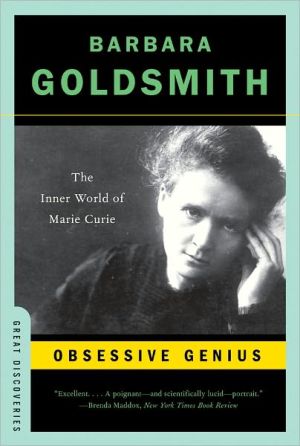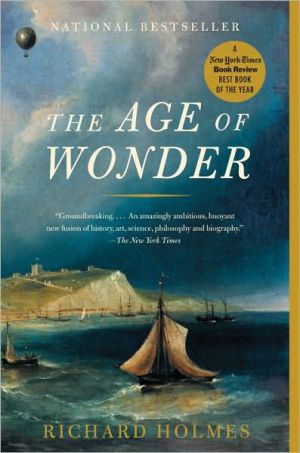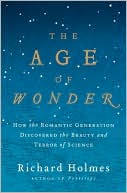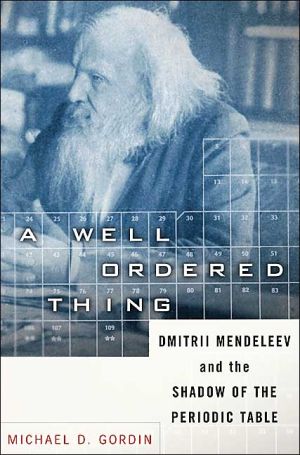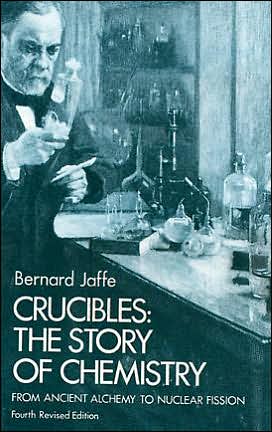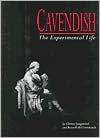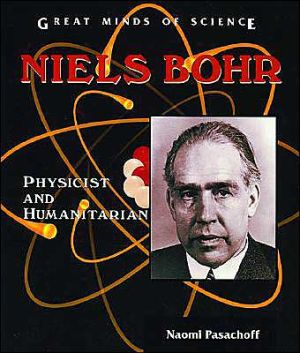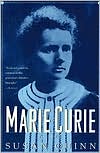Obsessive Genius: The Inner World of Marie Curie (Great Discoveries Series)
Through family interviews, diaries, letters, and workbooks that had been sealed for over sixty years, Barbara Goldsmith reveals the Marie Curie behind the myth—an all-too-human woman struggling to balance a spectacular scientific career, a demanding family, the prejudice of society, and her own passionate nature. Obsessive Genius is a dazzling portrait of Curie, her amazing scientific success, and the price she paid for fame.\ The best-selling, "excellent . . . poignant—and scientifically...
Search in google:
Through family interviews, diaries, letters, and workbooks that had been sealed for over sixty years, Barbara Goldsmith reveals the Marie Curie behind the myth—an all-too-human woman struggling to balance a spectacular scientific career, a demanding family, the prejudice of society, and her own passionate nature. Obsessive Genius is a dazzling portrait of Curie, her amazing scientific success, and the price she paid for fame. The New York Times - Brenda Maddox As seen in Goldsmith's poignant -- and scientifically lucid -- portrait, she was a depressed, obsessive genius. Life itself was less important than the work. Could Marie Curie have achieved so much without the depression? Probably. Without the obsession? Probably not.
Introduction13Chapter 1Early Influences20Chapter 2"I Came Through It All Honestly"33Chapter 3Paris45Chapter 4Pierre53Chapter 5Remarkable Accidents61Chapter 6"The Question Was Entirely New"68Chapter 7"The Best Sprinters"80Chapter 8"A Beautiful Color"89Chapter 9"What Is the Source of the Energy?"101Chapter 10"I Will Make Him an Help Meet for Him"107Chapter 11"The Disaster of Our Lives"114Chapter 12"We Were Happy"127Chapter 13The Metamorphosis135Chapter 14"My Children...Cannot Awaken Life in Me"145Chapter 15"The Chemistry of the Invisible"154Chapter 16Honor and Dishonor165Chapter 17"She Is Very Obstinate"177Chapter 18"All My Strength"183Chapter 19The Making of a Myth191Chapter 20To Pass the Torch205Chapter 21Marie's Legacy220Acknowledgments234Notes237Selected Bibliography249Photo Credits256
\ Brenda MaddoxAs seen in Goldsmith's poignant -- and scientifically lucid -- portrait, she was a depressed, obsessive genius. Life itself was less important than the work. Could Marie Curie have achieved so much without the depression? Probably. Without the obsession? Probably not.\ — The New York Times\ \ \ \ \ Publishers WeeklySo enduring is the reputation of Marie Curie that more than 100 years after she won her first Nobel Prize, for physics in 1903 (she won a second, for chemistry, in 1911), Curie (1867-1934) is still regarded by most as the pre-eminent woman scientist of the 20th century. Goldsmith's straightforward biography illuminates both the public Curie, a tireless scientist obsessed with work, and the private one, a woman who suffered bouts of severe depression, was distant from her children and scarred deeply by the accidental death of her scientist husband, Pierre, in 1906. Using long-sealed Curie family archives, Goldsmith offers a well-rounded view of her subject that makes good dramatic use of the considerable intrigue that surrounded Curie's scientific accomplishments and her private life. Goldsmith also reminds us, without belaboring the point, that Curie overcame obstacles, including pervasive sexism within the scientific community that almost cost her the Nobel. Goldsmith is also adept at demonstrating that for Curie the nexus of public accomplishments and private happiness was tenuous. Although Curie continued working after Pierre's death, Goldsmith says she never allowed his name to be spoken: "Never again would there be a sign of joy." Goldsmith, biographer of Gloria Vanderbilt and Victoria Woodhull, is weakest at explaining the theoretical basis for Curie's scientific breakthroughs, which set the stage for the exploration of the atom. B&w illus. (Nov.) Copyright 2004 Reed Business Information.\ \ \ Library JournalMarie Curie's ability to focus her intelligence on what she wanted to accomplish is legendary, and in this exploration of Curie's "obsessive genius" Goldsmith (Little Gloria... Happy at Last) has produced a finely detailed and well-researched biography. But she has interwoven with Curie's scientific progress the emotional and personal costs involved, from Curie's early years as a governess to the ongoing battles for sexual equality in the scientific academies of Europe. The hypocrisy of the times, particularly regarding Marie's affair with Paul Langevin (her late husband's student), is so striking that one wonders why Curie retained her incredible loyalty to France. Unlike Susan Quinn's detailed Marie Curie, which concentrates on Curie's scientific life, Goldsmith focuses on the social and economic hurdles that Curie had to overcome to manage the roles of scientist, wife, mother, and staunch French wartime ally. She also provides an excellent portrait of the age in which Marie Curie was to do so much for the world. Recommended for all libraries.-Hilary Burton, formerly with Lawrence Livermore National Lab, CA Copyright 2004 Reed Business Information.\ \ \ \ \ Kirkus ReviewsPopular biographer Goldsmith (Other Powers, 1996, etc.) pens a sharp, sprightly, refreshing portrait of the brilliant, melancholic scientist, affording a sensible look into her head and into the body of her work. Forget the myths surrounding Marie Curie (1867-1934), says the author, and consider her on merits alone. Are they not wowing? First woman with a degree in physics from the Sorbonne, first female professor at the school, first woman to win not one but two Nobel Prizes, first woman to be elected to the French Academy of Medicine. In a world of vicious, institutionalized sexism, Curie was as "rare as a unicorn." Nothing came easy, notes Goldsmith. Her father drove her hard down the intellectual path. Her husband, brick though he was in other ways, left the household to her alone. She was plagued by recurrent depressions. Money problems hampered her research, and her research probably killed her. Goldsmith does her best to set right some of the discrepancies between history and myth. Curie, for instance, did not toil alone: " . . . in this journey of discovery, Marie and Pierre were equally involved . . . Pierre took over the physics . . . Marie acted essentially as a chemist." She was, however, the one who sparked the pursuit into the mysteries of radium. The author also acknowledges the tangle and messiness of her subject's life. Curie took a governess's job to put her sister through the Sorbonne. She had her home stoned after the disclosure of her affair with a married man and brushed off the tar-and-feathering to accept her second Nobel that same year. She exposed her daughter to radium, knowing its deleterious effects-chronic ill health and fingers like concrete might have beena clue. Goldsmith unconvincingly suggests an answer can be found in willfully ignorant "love" for radium: "my child," Curie called it. Opens the door on Curie as she opened the door on atomic science. (15 photos)\ \
